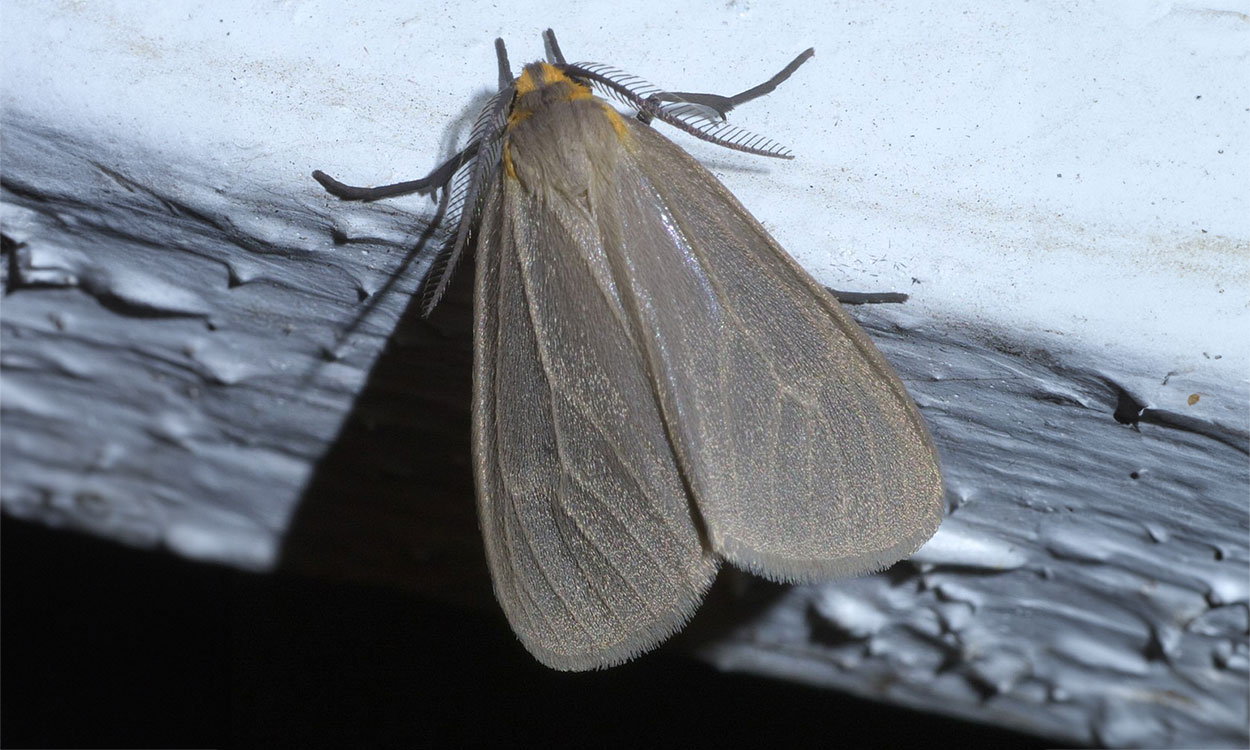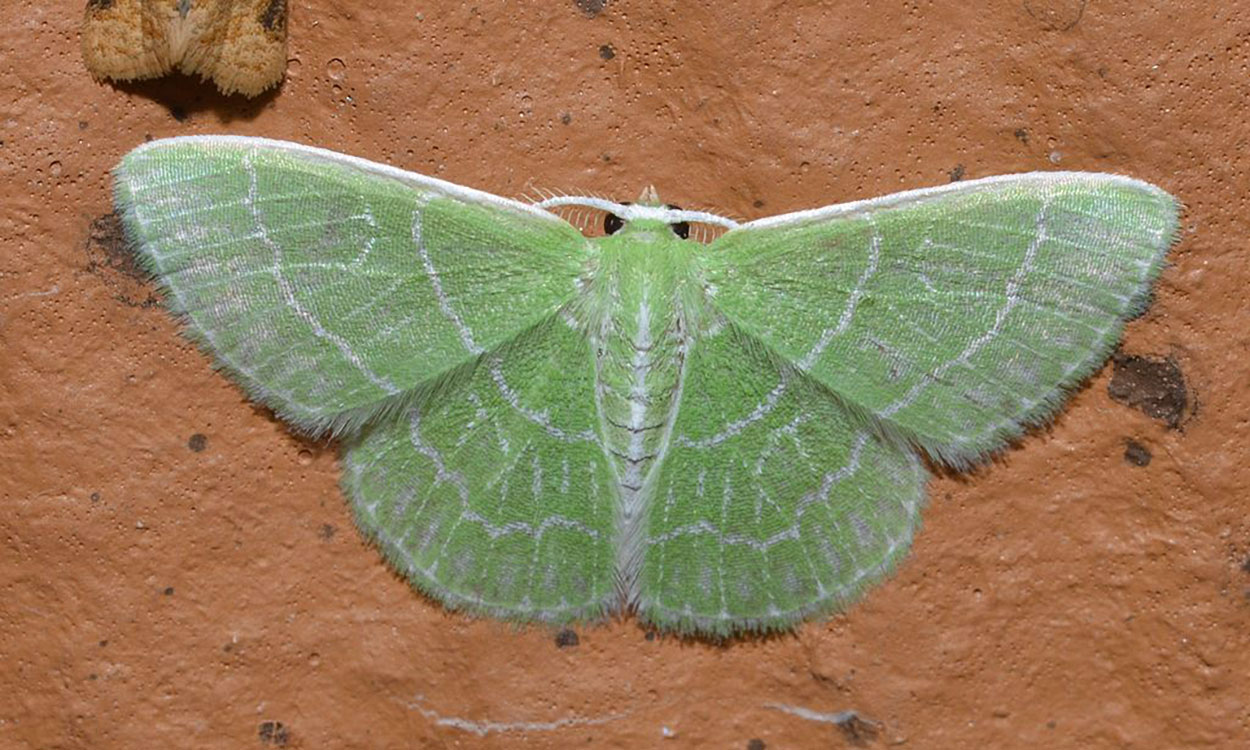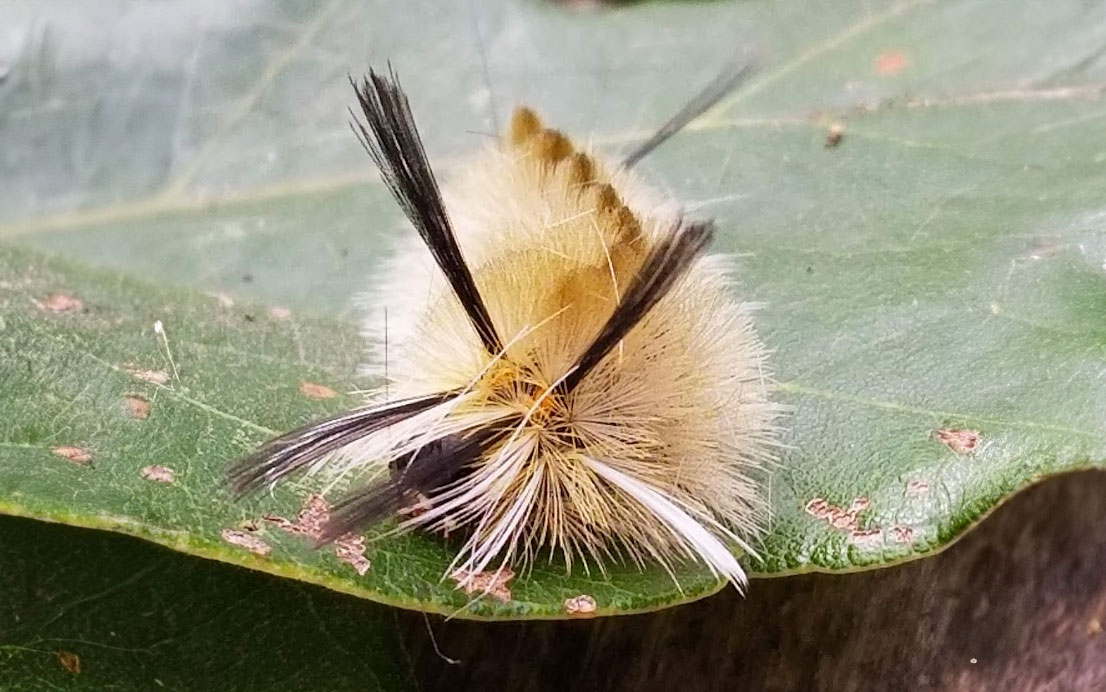About Moths

Moths are magical and fascinating creatures, and they are also important pollinators.
Both moths and butterflies are in the Lepidoptera order, and while butterflies are popular and charismatic, there are actually far more moth species than butterflies.
There are approximately 140,000 known moth species worldwide and only about 20,000 known butterfly species. In North America there are more than 10,000 known moth species and only 800 known butterfly species!
In order for moths to thrive, they need the right food sources and the right habitat in addition to protection from insecticides and artificial light at night.


Night-Blooming Flowers
Many moths take wing at night, and some prefer the night garden blooms and fragrances. Night-flying moths can be attracted to light and white-colored flowers that look like they are glowing in the moonlight. Plants with light green, silver, or gray foliage, or shiny leaves reflect the light, while fragrant blooms entice moths out of their daytime hiding.

Sometimes moths will travel over 900 yards following the strong scents of the night-blooming flowers. Moths feed on nectar, and they transfer pollen from flower to flower.
In fact, recent research (Anderson et al., 2023) has shown that certain night-flying moths can be more-efficient pollinators than day-flying pollinators like bees!
Characteristics of flowers that night-flying moths prefer include:
- Blooms that stay open late in the day and into the night.
- Blooms that are more-fragrant late in the day and in the night.
- Pale-colored or white flowers.
- Trumpet-shaped flowers with lots of nectar.
Table 1 below features a list of night-blooming annual, perennial, and biennial flowers with characteristics that attract moths.
| Common Name | Scientific Name | Sun | Height | Bloom | Characteristics |
|---|---|---|---|---|---|
| Angel’s trumpet | Burgmansia sp. | Sun | 5-10’ | Fragrant yellow or white flowers | Subtropical annual |
| Devil’s trumpet, Moonflower | Datura innoxia | Sun | 2-5’ | Large white, fragrant, trumpet shaped flowers | Annual |
| Evening scented stock | Matthiola longipetala | Sun, part shade | 12-15” | Summer flowering, Creamy yellow, pink, or white | Annual |
| Flowering tobacco | Nicotiana sp. | Sun | 2-7’ | Fragrant white flowers | Annual |
| Moonflower | Ipomoea alba | Sun | Vine to 20’ | White, saucer shaped fragrant flowers | Annual |
| Tuberose | Agave amica | Sun | 2-3’ stalks | Tubular white, fragrant flowers | Annual |
| Four o’clocks | Mirabilis jalapa | Sun, part shade | 6-12” | Tubular orange, white, pink, or yellow flowers | Annual |
| Night phlox | Zaluzianskya capensis | Sun | 6-12” | Lacy white flowers with burgundy petals with honey fragrance | Annual |
| Foamflower | Tiarella sp. | Part-shade, shade | 6-12” | Groundcover with pink flowers | Perennial |
| Evening primrose | Oenothera biennis | Sun, part shade | 1-5’ | White, pink, or yellow flowers | Biennial |
| Yucca | Yucca glauca | Sun | 3-4’ | White, yellow flowers | Perennial |
*See Table 2 for a list of native host plants for moths.
Food Sources and Host Plants

There are also many day-flying moths, but regardless of when moths are active, most moths are nectar generalists. Any plant that is an excellent source of nectar will be a good source of food for moths. Although adult moths feed on nectar from a variety of flowers, it is also important to remember that some specialist moths require larval host plants that are specific to their species. Table 2 features a variety of these host plants that are native to North America.
There are many native plants that support a wide variety of moth species for nectar or as larval host plants. Some of these plants are keystone plants; plants that are critical to the food web and are necessary for many species of wildlife to complete their lifecycle.
Native keystone plants are those that support the largest number of moth and butterfly species. These keystone plants are often native trees and shrubs, like oaks, birch, willows, and cherries, but there are many native flowers and grasses that also support and are host plants for a variety of moths. And while moths and caterpillars are fascinating on their own, they are also an important food source for songbirds and other wildlife and are a valuable contribution to our ecosystems.


| Common Name | Scientific Name | Sun | Moisture | Height | Bloom | Color | Form | Moth Visitors/Hosts |
|---|---|---|---|---|---|---|---|---|
| Oak | Quercus sp. | Sun | Dry, medium | 50-80’ | NA | NA | Tree | Imperial, Polyphemus, Banded tussock |
| River birch | Betula nigra | Sun, part shade | Medium to wet | 40-70’ | NA | NA | Tree | Luna, Imperial |
| Wild grape | Vitis riparia | Sun, part shade | Dry, medium | Up to 35’ long | May-Jun | White, green | Vine | Eight spotted forester |
| Leadplant | Amorpha canescens | Sun, part shade | Dry | 1-3’ | Jun-Jul | Purple | Shrub | Leadplant flower, Magdalen underwing |
| Northern bush honeysuckle | Diervilla lonicera | Sun, part shade | Dry, medium | 1-3’ | Jun-Aug | Yellow | Shrub | Laurel sphinx, Snowberry clearwing |
| Serviceberry | Amelanchier sp. | Sun, shade | Medium | 10-25’ | May-Jun | White | Shrub | Small-eyed sphinx, Interrupted dagger |
| Aster | Symphyotrichum sp. | Sun, part shade | Dry, medium | 2-5’ | Aug-Oct | Purple-blue | Perennial forb | Wavy-lined emerald |
| Blazing star | Liatris sp. | Sun | Dry, medium | 3-5’ | Aug-Sep | purple | Perennial forb | Glorious flower, 3-lined flower, Wavy-lined emerald |
| Goldenrod | Solidago sp. | Sun | Dry, medium | 3-5' | Aug-Oct | Yellow | Perennial forb | Wavy lined emerald |
| Joe Pye weed | Eutrochium purpureum | Sun, part shade | Medium, wet | 3-7’ | Jul-Sep | Pink, purple | Perennial forb | Clymene, 3-lined flower, Ruby tiger, Great tiger |
| Rose milkweed | Asclepias incarnata | Sun | Medium, wet | 3-5’ | Jun-Aug | Pink | Perennial forb | Hawk moth, Dogbane tiger, milkweed tussock |
| Yucca | Yucca glauca | Sun | Dry | 2-4’ | Jun-Aug | White | Perennial forb | Yucca moth |
*Native to North America
References
- Anderson, M., Rotheray, E. L., & Mathews, F. (2023). Marvellous moths! pollen deposition rate of bramble (Rubus futicosus L. agg.) is greater at night than day. Plos one, 18(3), e0281810.
- McCormac, J., & Gottfried, C. (2023). Gardening for Moths: A Regional Guide. Ohio University Press.
- Gardening for Moths, Xerces Society.
- Butterflies and Moths of North America, Butterflies and Moths of North America Project.
- Keystone Plant List Ecoregion 9-Great Plains, National Wildlife Federation, Garden for Wildlife.
- Beginner’s Guide to Moths of the Midwest, Angella Moorehouse, Illinois Nature Preserve Commission.
- Moth Pollination, US Forest Service.


